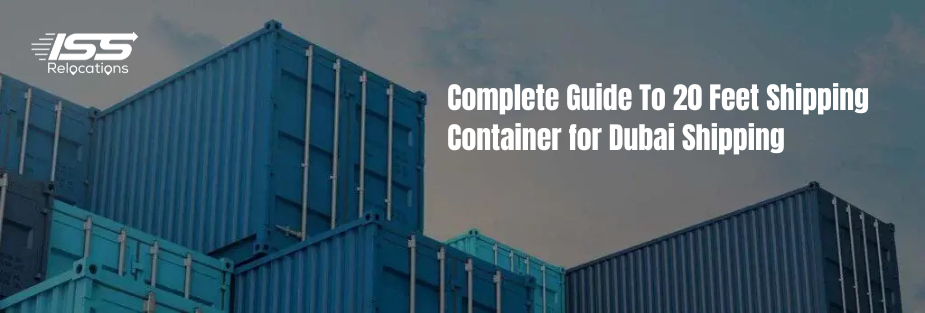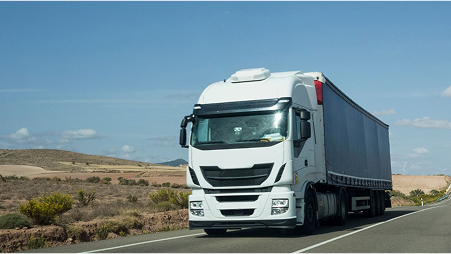
Complete Guide To 20 Feet Shipping Container for Dubai Shipping
Shipping containers are the backbone of global trade, offering secure and efficient transportation of goods across continents. In Dubai, a major logistics hub, choosing the right container size is crucial for cost-effective and hassle-free shipping. Among the various container options available, the 20 feet shipping container stands out as one of the most popular choices due to its versatility, affordability, and suitability for a wide range of cargo.
Whether you’re shipping household goods, vehicles, or commercial products, understanding the specifications and benefits of a 20 feet container can help you make an informed decision. This guide explores the features, advantages, and key considerations of using this container for shipping to Dubai, ensuring a smooth and seamless shipping experience.
Choose the Right Container
Discover everything about 20ft shipping containers—capacity, costs, and benefits—to make your Dubai shipping process smooth and efficient.
Understanding the 20 Feet Shipping Container
A 20 feet shipping container is a standardized cargo unit widely used in international shipping. Its dimensions, weight capacity, and structural durability make it ideal for transporting goods safely across long distances. From small businesses to large-scale logistics operations, this container meets diverse shipping needs, offering both convenience and reliability.
Standard Dimensions and Weight Capacity
A 20 feet container typically measures 20 feet in length, 8 feet in width, and 8.5 feet in height. The internal dimensions provide ample space for storing various types of cargo, while the container’s robust construction ensures maximum protection during transit. The standard weight capacities include:
- Tare weight: Approximately 2,200–2,400 kg
- Maximum payload capacity: Around 25,000 kg
- Total gross weight: Up to 27,500 kg
These specifications make it an excellent choice for transporting both heavy and lightweight goods efficiently.
Types of 20 Feet Shipping Containers
Different variations of the 20 feet shipping container are available to suit specific shipping requirements. Some of the common types include:
Standard Dry Container
The most widely used type, designed for general cargo such as textiles, electronics, and household goods.
High Cube Container
Offers additional height, providing more storage space for bulky or oversized cargo.
Refrigerated Container (Reefer)
Equipped with temperature control for perishable goods like food, pharmaceuticals, and chemicals.
Open-Top and Flat-Rack Containers
Ideal for transporting heavy machinery, construction materials, and oversized goods that do not fit in standard containers.
Common Uses in Shipping and Storage
A 20 feet shipping container is not just limited to international trade; it is also widely used for various storage and transportation needs, including:
- Commercial shipping of manufactured goods and raw materials
- Personal moves, especially for individuals relocating to Dubai with household belongings
- Vehicle transportation, such as cars, motorcycles, and small machinery
- On-site storage for businesses needing secure space for inventory or equipment
Why Choose a 20 Feet Shipping Container for Dubai Shipping?
Dubai’s strategic location and advanced port facilities make it a key destination for global trade. When shipping cargo to this vibrant city, choosing the right container size can impact costs, efficiency, and overall logistics management. A 20 feet shipping container offers several advantages that make it an optimal choice for businesses and individuals shipping goods to Dubai.
Cost-Effectiveness Compared to Other Container Sizes
A 20 feet shipping container provides an economical shipping solution, especially for smaller cargo loads that do not require a larger 40-foot container. It strikes a balance between capacity and affordability, reducing shipping costs while maximizing space utilization.
Compared to less-than-container-load (LCL) shipments, a full 20 feet container eliminates the need to share container space with other shippers, ensuring better security and lower risks of cargo damage.
Suitable for Various Cargo Types
A 20 feet shipping container is designed to accommodate a wide range of goods, making it a preferred choice for different shipping needs. It is ideal for:
Household Goods and Personal Belongings
Individuals relocating to Dubai can use a 20 feet shipping container to transport furniture, appliances, and personal items safely. It provides sufficient space for a standard two-bedroom household’s belongings.
Vehicles and Machinery
This container size is frequently used to ship cars, motorcycles, and light industrial equipment. The container’s secure and weatherproof structure ensures that vehicles arrive in Dubai undamaged.
Commercial Shipments
Businesses exporting products such as electronics, textiles, and packaged food items benefit from the ample storage space and secure transit offered by a 20 feet container.
Compliance with Dubai’s Shipping Regulations
Shipping goods to Dubai involves specific regulatory requirements, including customs clearance and import documentation. A 20 feet container complies with international shipping standards, making it easier to meet Dubai’s customs regulations.
Capacity: What Can Fit in a 20 Feet Shipping Container?
A 20 feet shipping container offers ample storage space, making it a versatile choice for transporting various types of cargo. Whether you’re shipping household goods, commercial products, or vehicles to Dubai, understanding its capacity helps in planning an efficient and cost-effective shipment.
Cargo Volume and Weight Limits
The internal dimensions of a 20 feet container provide approximately 1,170 cubic feet of usable space. It can accommodate up to 25,000 kilograms of cargo, depending on the type of goods being transported. For businesses and individuals shipping to Dubai, optimizing weight distribution is essential to comply with international shipping regulations.
The container’s structure allows for easy stacking of boxes and goods, maximizing the available space. However, proper planning is crucial to prevent damage during transit. Overloading the container beyond its weight limit can lead to additional charges, fines, or shipment delays.
Household Goods and Furniture
For individuals relocating to Dubai, a 20 feet shipping container can accommodate the contents of a two-bedroom apartment. Common household items that fit into this container include sofas, beds, dining tables, washing machines, and kitchen appliances. Properly arranging these items using protective packaging helps prevent damage during long-haul shipping.
Commercial Products and Machinery
Businesses often use a 20 feet container to transport manufactured goods, textiles, and small machinery. The container’s secure, weatherproof design ensures that sensitive products such as electronics and packaged food items remain safe throughout the journey. Heavy-duty goods like industrial tools and automotive parts also fit well within its weight and volume limits.
Vehicle Shipping Considerations
A standard 20 feet shipping container can accommodate one full-sized car, making it a preferred choice for auto transport to Dubai. Motorcycles and smaller vehicles can also fit alongside additional cargo. Using proper bracing and tie-downs ensures that the vehicle remains stable and undamaged during shipping.
Shipping a 20 Feet Container to Dubai: Key Considerations
Shipping a 20 feet container to Dubai involves multiple factors, including documentation, transit time, and cost. Understanding these elements ensures a seamless shipping experience while avoiding unexpected expenses or delays.
Essential Documentation and Customs Clearance
Every shipment to Dubai must comply with customs regulations. The required documents for shipping a 20 feet shipping container include a bill of lading, packing list, commercial invoice, and import permits if necessary. Dubai’s customs authorities conduct thorough inspections to ensure compliance with import restrictions, making it crucial to provide accurate paperwork.
Additionally, cargo declarations must match the actual contents inside the container. Failing to declare items properly can result in fines, confiscation, or shipment delays. Working with experienced logistics providers helps in managing documentation efficiently.
Transit Times and Shipping Routes
The duration for shipping a 20 feet shipping container to Dubai depends on the origin country, shipping method, and port congestion. On average, transit times range from 10 to 40 days, depending on whether the shipment is sent via direct or transshipment routes.
Ocean freight is the most common transportation method, with major shipping lines operating routes to Dubai’s Jebel Ali Port. Understanding estimated transit times allows businesses and individuals to plan their shipments effectively, avoiding unnecessary delays.
Cost Factors and Shipping Expenses
The cost of shipping a 20 feet shipping container to Dubai varies based on several factors, including the distance traveled, cargo type, and additional services like customs clearance or door-to-door delivery. Shipping costs typically include freight charges, handling fees, and port duties.
Choosing full-container-load (FCL) shipping is often more cost-effective than less-than-container-load (LCL) for businesses transporting bulk goods. However, accurate cost estimation requires working with logistics experts who provide transparent pricing and assistance with budgeting shipping expenses.
Chat With an Expert Now
ISS Relocations: Simplifying Your 20 Feet Container Shipping
Shipping a 20 feet shipping container to Dubai involves multiple steps, from packing to customs clearance. ISS Relocations specializes in making this process smooth and hassle-free, ensuring that shipments reach their destination on time and in perfect condition.
Comprehensive Shipping Solutions
ISS Relocations offers complete container shipping solutions tailored to individual and business needs. Whether it’s personal belongings, commercial products, or vehicle transport, their expertise ensures a secure and cost-effective shipping experience. Their services cover everything from container loading to final delivery, eliminating stress for shippers.
Customs Clearance and Regulatory Compliance
Navigating Dubai’s customs regulations can be complex, but ISS Relocations simplifies the process by handling all required documentation. Their experienced team ensures that each 20 feet shipping container meets compliance standards, reducing the risk of delays and additional costs. By offering customs brokerage services, ISS Relocations helps shippers avoid common pitfalls in international shipping.
Safe and Secure Transportation
Ensuring the safety of goods inside a 20 feet shipping container is a priority. ISS Relocations employs professional packing and securing techniques to minimize damage risks. Their extensive network of shipping partners allows for reliable tracking and efficient delivery, providing peace of mind to customers.
Cost-Effective and Transparent Pricing
With ISS Relocations, shippers benefit from transparent pricing structures that prevent unexpected charges. Their cost-effective shipping solutions help individuals and businesses optimize budgets while ensuring high-quality service. By offering flexible shipping options, ISS Relocations caters to diverse needs, making international relocation or commercial shipments more accessible.
Wrapping Up
A 20 feet shipping container is one of the most practical solutions for transporting goods to Dubai. Its balance of affordability, capacity, and versatility makes it ideal for both personal and commercial shipping needs. Understanding its specifications, cargo capacity, and shipping process helps in making an informed decision that ensures cost-effective and seamless transportation.
Why a 20 Feet Shipping Container is the Best Choice
A 20 feet shipping container offers ample space for various types of cargo while remaining compact enough to minimize shipping costs. Whether it’s household belongings, machinery, or commercial products, this container provides a secure and reliable way to move goods internationally. Compared to other container sizes, it is more cost-effective for those who do not require the extra space of a 40-foot unit, making it a preferred choice for individuals and businesses alike.
Shipping to Dubai with ISS Relocations
Managing the logistics of a 20 feet container can be complex, but working with an experienced shipping provider simplifies the process. ISS Relocations ensures that shipments are handled professionally, from documentation and customs clearance to final delivery. Their expertise in international freight services guarantees smooth and timely shipping to Dubai, reducing potential delays and unexpected costs.
Final Thoughts on Container Shipping
Choosing the right container size is crucial for a successful shipping experience. A 20 feet shipping container remains one of the most widely used options due to its versatility and cost efficiency. By partnering with a trusted shipping provider like ISS Relocations, shippers can benefit from expert guidance, secure transport, and a streamlined process that makes international shipping hassle-free.
Plan Stress-free Move with Top Moving Company in UAE - ISS Relocations

Frequently Asked Questions
What are the exact dimensions of a 20 feet shipping container?
A 20 feet container measures approximately 20 feet in length, 8 feet in width, and 8.5 feet in height. The internal space provides around 1,170 cubic feet of cargo capacity, making it a versatile choice for transporting various goods.
How much cargo can fit inside a 20 feet shipping container?
A 20 feet container can hold up to 25,000 kilograms of cargo, depending on the type of goods being transported. It has enough space to accommodate a fully furnished two-bedroom apartment’s contents or multiple pallets of commercial products.
How long does it take to ship a 20 feet shipping container to Dubai?
The shipping time for a 20 feet container to Dubai depends on the origin country and shipping route. On average, transit times range from 10 to 40 days, with direct shipments arriving faster than transshipment routes.
What are the shipping costs for a 20 feet shipping container to Dubai?
The cost of shipping a 20 feet container to Dubai varies based on distance, cargo type, and additional services such as customs clearance and door-to-door delivery. Factors like fuel prices, port fees, and container availability also influence the final cost.
What documents are required to ship a 20 feet shipping container to Dubai?
To ship a 20 feet container to Dubai, essential documents include a bill of lading, commercial invoice, packing list, and any necessary import permits. Customs clearance requires accurate documentation to prevent shipment delays or additional fees.
Can a 20 feet shipping container be modified for other uses?
Yes, a 20 feet container can be modified for alternative uses such as mobile offices, storage units, or even housing. Its durable steel construction makes it a popular choice for repurposing into secure and weather-resistant structures.
How does ISS Relocations assist with shipping a 20 feet shipping container?
ISS Relocations provides end-to-end logistics solutions for transporting a 20 feet container to Dubai. Their services include professional packing, customs clearance, secure transit, and final delivery, ensuring a seamless shipping experience.
Moving Company - Recent Blog
Stay informed and prepared for your next move with our latest blogs on moving services in the UAE. From expert packing tips to international relocation guides, ISS Relocations brings you up-to-date insights to make your moving experience smoother, safer, and stress-free.










